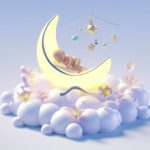Ever noticed how there’s more than one way to say “beautiful” in Japanese? It’s not just about knowing kirei and utsukushii; the Japanese language has a whole spectrum of words to describe beauty, each with its own special meaning and vibe. This guide will walk you through those words – from the everyday kawaii to the more sophisticated yūgen – showing you exactly when to use each one. We’ll break down the subtle differences, give you plenty of examples, and even throw in some handy tips to help you avoid those embarrassing language blunders. By the end, you’ll be able to talk about beauty in Japanese like a pro, expressing exactly what you mean with confidence and accuracy.
Beautiful in Nihongo: Aesthetic Vocabularies
Let’s dive into the fascinating world of expressing “beautiful” in Japanese! It’s way more nuanced than just a single word translation. Japanese culture deeply values aesthetics, and their language reflects this with a rich vocabulary for describing beauty, each word carrying subtle yet significant differences. This guide will help you navigate these nuances and choose the perfect word for any situation.
Unpacking the Beauty: Key Japanese Words and Cultural Significance
We’ll explore several words, examining their meanings, connotations, and appropriate uses. Mastering these will significantly enrich your Japanese and show a deeper understanding of the culture.
1. Kirei (きれい): This is your go-to word for everyday beauty, similar to “pretty” or “neat.” Think of it as describing something visually appealing and often clean. A sparkling clean kitchen, a well-organized room, or a vibrant flower arrangement – these all qualify for kirei. The emphasis is on aesthetic pleasantness rather than profound artistic merit. For example, you might say, “Kirei na hana da ne!” (きれいな花だね!)(Those are pretty flowers!).
2. Utsukushii (美しい): Level up from kirei! Utsukushii describes a more profound and elegant beauty. This beauty might evoke a sense of awe; it’s a more sophisticated and often deeper beauty than simple visual appeal. Think of stunning natural landscapes, masterpieces of art, or a person’s inner grace and poise. It suggests more than just surface-level attractiveness; it speaks to a deeper aesthetic quality. For instance, you could say, “Utsukushii yūhi da!” (美しい夕日だ!)(It’s a beautiful sunset!), highlighting the grandness and splendor of the scene.
3. Kawaii (かわいい): This one’s all about cuteness! Kawaii describes something endearing, charming, and often small or childlike. Think adorable puppies, cute babies, whimsical cartoon characters, or even certain styles of clothing or accessories. Kawaii is typically informal and often expresses affection. For example, “Kawaii neko da ne!” (かわいい猫だね!)(What an adorable cat!) would be perfectly suitable.
4. Suteki (素敵): Suteki translates roughly to “wonderful” or “lovely.” It describes something delightful, charming, and captivating. It can apply to a wide range of things: a beautiful restaurant, a memorable experience, a kind person, or even a piece of music. Think of something genuinely pleasing and uplifting. For example, “Suteki na basho da ne!” (素敵な場所だね!)(What a lovely place!) expresses a general sentiment of happiness and approval.
5. Migoto (見事): This word is reserved for truly magnificent things, often achievements or displays of skill. Think a breathtaking athletic feat, a stunning architectural achievement, a perfectly executed piece of artwork, or a spectacular natural phenomenon like a rainbow or aurora borealis. It suggests greatness and impressiveness. You could appreciate a skilled performance by saying, “Migoto na enbu da!” (見事な演舞だ!)(That’s a magnificent dance!).
6. Bijin (美人): Specifically referring to a beautiful woman, bijin carries a more formal and classical connotation. It emphasizes traditional standards of feminine beauty. You wouldn’t use this term casually; reserve it for formal settings or when describing someone’s remarkable beauty in a respectful manner. For instance, “Kanojo wa bijin desu.” (彼女は美人です。)(She is a beautiful woman) would be appropriate.
7. Jouhin (上品): This signifies elegance, refinement, and sophistication, mostly relating to manners, style, or objects. Think of beautifully crafted items, elegant attire, graceful movements, or refined taste, suggesting a higher standard of quality and polish. You may describe a meticulously crafted tea set as “Jouhin na chawan desu ne.” (上品な茶碗ですね。)(That’s an elegant teacup).
8. Yūgen (幽玄): This is the most elusive of all. Yūgen expresses a profound and mysterious beauty, often found in subtle aspects of nature or art. It involves a sense of mystery, deep emotion, and profound resonance that goes beyond simple aesthetic appreciation. It often describes something evocative and emotionally powerful, leaving a lingering impression on the viewer. To describe a particularly moving piece of art, someone could use the phrase “Yūgen na sakuhin desu ne.” (幽玄な作品ですね。)(That is a profound work of art).
9. Kabī (可美): Signifies loveliness and charm. Use this term to describe the endearing qualities in a person or object. The nuance is lighter than utsukushii, but deeper than kawaii. For example, “Ano hito wa kabī desu ne.” (あの人は可美ですね。)(That person is lovely.)
10. Enbirei (艶美): Refers to glamorous or bewitching beauty, often used when admiring someone’s captivating looks. Often used to describe actors and actresses. Example: “Enbirei na joyū da.” (艶美な女優だ。)(She is a glamorous actress.)
11. Karei (華麗): Denotes splendor, magnificence, and brilliance. Use this to describe something vibrant and richly adorned. Example: “Karei na butai da ne.” (華麗な舞台だね。)(That’s a magnificent stage.)
Comparing the Words: A Quick Guide to Aesthetic Nuances
The subtle differences between these words are best understood through comparison. The following chart summarizes their key characteristics:
| Term | Primary Meaning | Connotation | Formal/Informal | Typical Usage | Example |
|---|---|---|---|---|---|
| Kirei | Clean, pretty | Simple, everyday beauty | Informal | Everyday objects, scenery | “Kirei na heya da ne!” (きれいな部屋だね!)(What a clean room!) |
| Utsukushii | Beautiful, graceful | Profound, elegant beauty | Both | Art, nature, people | “Utsukushii keshiki da!” (美しい景色だ!)(What a beautiful view!) |
| Kawaii | Cute, adorable | Childlike, endearing | Informal | Children, animals, objects | “Kawaii inu da ne!” (かわいい犬だね!)(What a cute dog!) |
| Suteki | Lovely, wonderful | Charming, delightful | Informal | Experiences, places, people | “Suteki na o-mise da ne!” (素敵なお店だね!)(What a lovely shop!) |
| Migoto | Magnificent, splendid | Impressive, awe-inspiring | Both | Achievements, natural phenomena | “Migoto na hana-bi da!” (見事な花火だ!)(What magnificent fireworks!) |
| Bijin | Beautiful woman | Traditional, formal beauty | Formal | Referring to a woman’s beauty | “Kanojo wa hontō ni bijin desu.” (彼女は本当に美人です。)(She is truly a beautiful woman.) |
| Jouhin | Elegant, refined | Sophisticated, tasteful | Formal | Manners, clothing, art | “Jouhin na fuku o kite imasu ne.” (上品な服を着ていますね。)(You are wearing elegant clothes.) |
| Yūgen | Profound, mysterious beauty | Subtle, evocative, emotionally resonant | Formal | Art, nature, expressing a moving experience | “Sono e wa yūgen o kanjisasemasu.” (その絵は幽玄を感じさせます。)(That painting evokes a sense of yūgen.) |
| Kabī | Lovely, charming | Endearing | Informal | To describe a person or object | “Kono ningyō wa kabī ne.” (この人形は可美ね。)(This doll is lovely.) |
| Enbirei | Glamorous, bewitching | Captivating looks | Formal | Admiring someone’s look | “*Kanojo |
- Exotic Feminine Names with Beautiful Meanings and Global Origins - December 12, 2025
- Exotic Girl Names Reflecting Diverse Cultures And Unique Beauty - December 11, 2025
- Exotic Female Names Offer Cultural Richness and Unique Sounds - December 10, 2025










